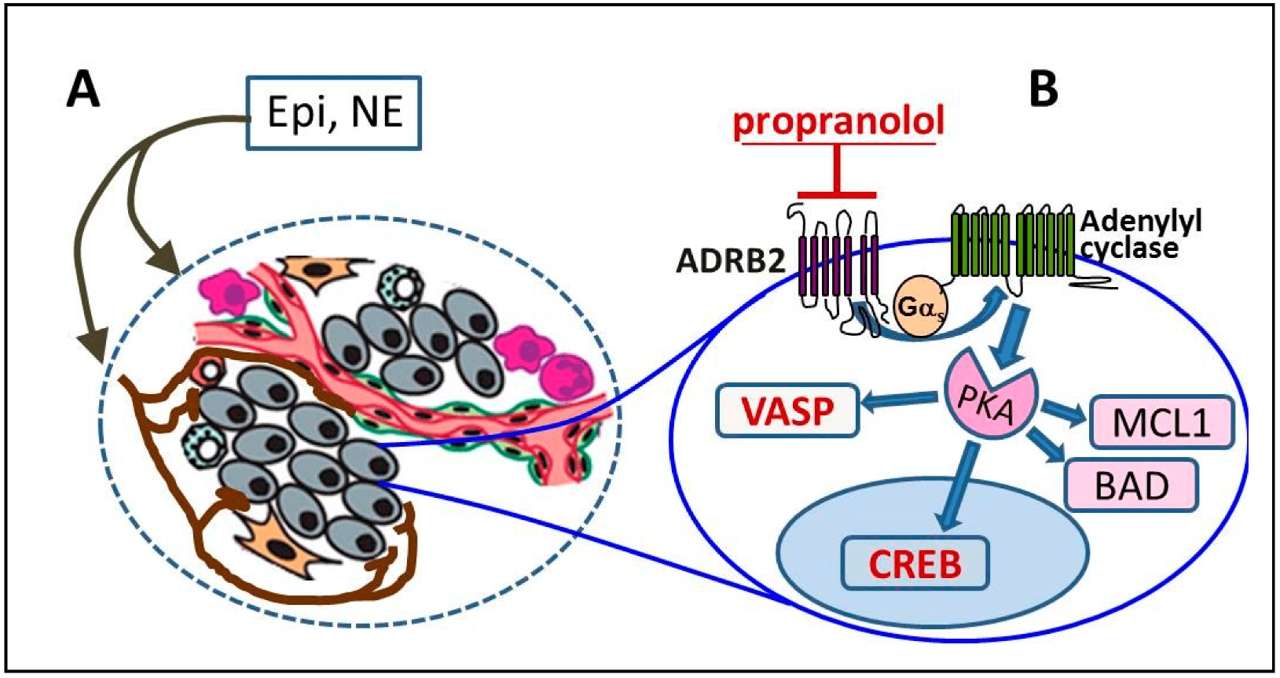Hi-Affi™ ADRB2 Stable Cell Line
Due to participance in diverse important physiological processes, G-protein coupled receptors (GPCRs) are currently among the most popular drug targets (30-40% of current marketed drugs). Based on extensive expertise and leading technologies, Creative Biolabs has successfully launched a unique Hi-Affi™ GPCR stable cell lines incorporated with engineered biosensor that can react to second messenger activations (e.g. Ca2+, cAMP, DAG). Our scientists now are confident to introduce our Hi-Affi™ human ADRB2 stable cell line for compound function studies to global researchers.
Introduction to ADRB2 Receptor
The human β2-adrenoceptor is a member of the G protein-coupled receptor family and widely distributed in the respiratory tract. It interacts with epinephrine, a hormone, and neurotransmitter who transduce signaling via a downstream L-type calcium channel interaction. Epinephrine has been shown to mediate physiologic responses such as bronchodilation and smooth muscle relaxation.
Binding by β2-agonists causes the activation of the β2-adrenoceptor and α-subunit of the associated Gα protein to dissociate and couple with adenylate cyclase (AC), increasing the concentration of cAMP and stimulating Protein kinase A (PKA). PKA induces phosphorylation (Pi) of the receptor protein and uncoupling of Gα.
 Fig.1 ADRB2 signaling in prostate cancer.1, 2
Fig.1 ADRB2 signaling in prostate cancer.1, 2
Hi-Affi™ ADRB2 Stable Cell Line
Hi-Affi™ ADRB2 cell line is developed by co-transfection of human adrenergic receptor beta 2 (ADRB2) and cAMP-activated, membrane-associated fluorescent biosensor in U2OS cells. Upon ADRB2 activation by certain compound, cellular changes in cAMP concentration will cause rapid translocation of the biosensor (from plasma membrane to cytosolic vesicles). This way, GPCR activities will be translated into obvious changes in fluorescence location & intensity. The ADRB2 cell line has been applied to assay compounds and analyze their capability to modulate ADRB2. This cell line has been validated using an approved small molecular as an ADRB2 agonist in a High Content Analysis (HCA) Platform. It has been proved to be highly efficient, convenient and easy to quantify, making an ideal method for early-stage compound screening & validation.
Featured Advantages of Hi-Affi™ ADRB2 Stable Cell Lines
- Time-, cost-saving
- Easy operations, with no special requirements for reagents or equipment
- Amendable for high-throughput format
- No modifications/labeling of ADRB2 or downstream pathways, maintaining the native signaling events
As a leading-edge biotechnology company, Creative Biolabs is always focused on leverage leading-edge technologies and resources to best address custom requests and demands. We currently provide a full range of Hi-Affi™ cMAP-activated cell lines including:
|
We also offer well-established Hi-Affi™ biosensor cell line options to study calcium-, DAG-related as well as multiplex pathway events of various GPCRs. If you cannot find your desired target in the catalog, we are always happy to establish a custom cell line upon request. Please contact us for more information.
References
- Kulik, George. "ADRB2-Targeting therapies for prostate cancer." Cancers 11.3 (2019): 358.
- under Open Access License CC BY 4.0, without modification.
For Research Use Only.
